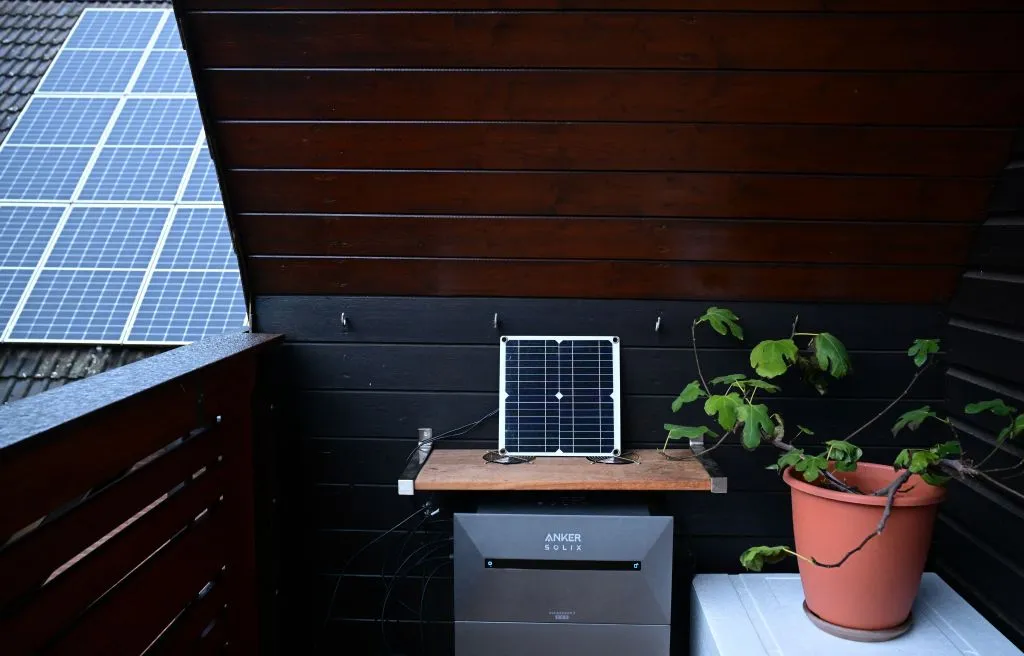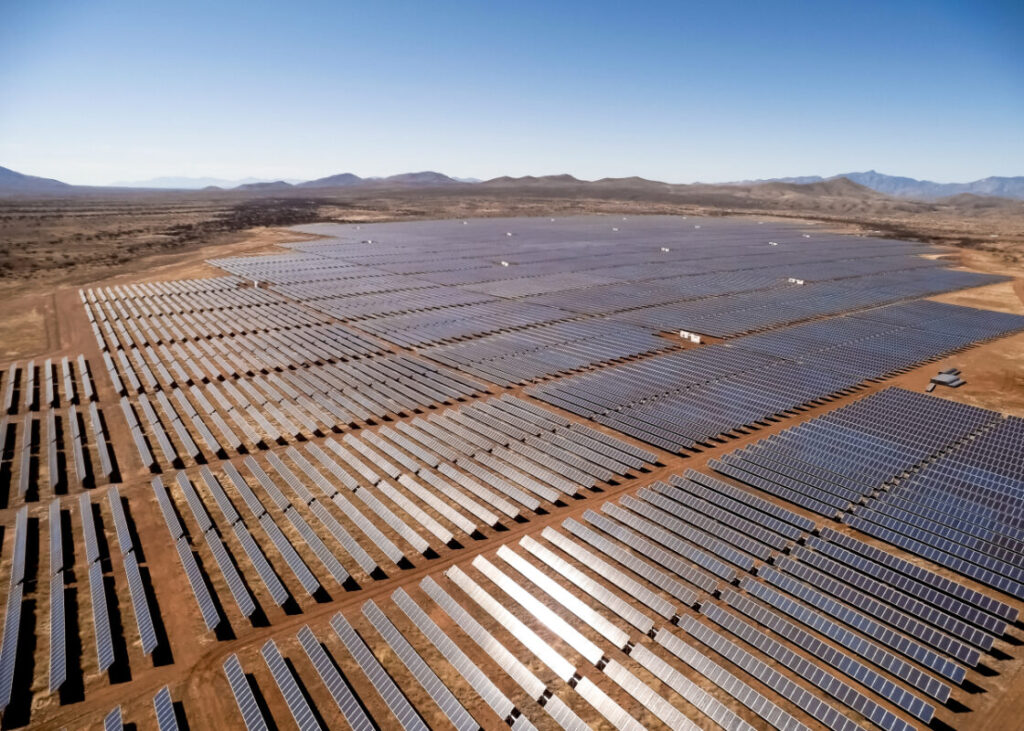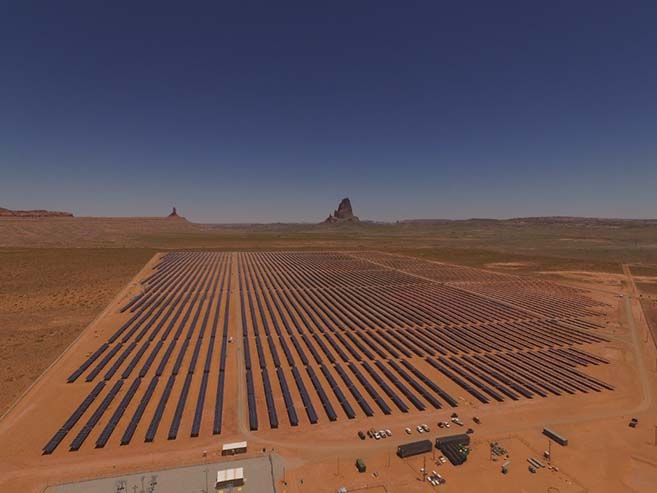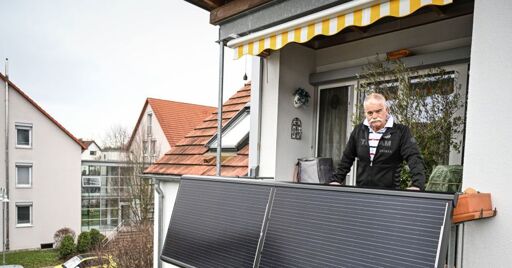HOAs and Condo rules and shit.
Affording a balcony might be step one though.
I wanted an apartment with a balcony but they’re all $500+ more a month in rent then I’m already paying.
Tl;dr: Because we haven’t created a safety standard for it.
The lack of an Underwriters Laboratories (UL) standard is perhaps the biggest obstacle to the adoption of balcony solar. The company certifies the safety of thousands of household electrical products; according to Iowa State University, “every light bulb, lamp, or outlet purchased in the US usually has a UL symbol and says UL Listed.” This assures customers that the product follows nationally recognized guidelines and can be used without the risk of a fire or shock.
Oh, America? The one still clinging to 110V (thus more current) and in some cases using aluminum wires? The one where safety standards are for wussies? Yeah I wonder why.
Except that we have 240v?
Why do people overseas keep getting this wrong?
In the USA, by and large, homes are supplied with 240v with a neutral in the middle. So each phase is 120v. And we can access 240 by simply going across both phases. Literally every house I’ve ever been in my whole life has had 240v to the panel, including ones built before anyone on Lemmy was born.
The only places this isn’t true was a couple of large apartment complex I lived in for few years where it was 360 to the complex 208 to the unit and 115v on each phase.
If you took out the neutral, we’d have 240 exactly like Europe. In theory (definitely not within code), on 90+% of houses in the USA, you could just wire the neutral to the opposite phase as live that the circuit is already on and get the full 240v to every outlet in the house (DO NOT FUCKING DO THIS). Each phase that we have only exists in the context of the neutral, and the neutral is strictly optional(though common) in the context of things like high draw devices.
As far as your aluminum comment… First, why aren’t you saying “aluminium” if you’re not (seemingly) American? But you realize that aluminum works perfectly fine for power delivery right? The EU uses aluminum in places too…
“Europe’s energy transition is about one thing, more renewable power production, and the power produced must be transported over long distances. Aluminium is crucial for transporting electricity to where it is needed. By expanding the capacity to deliver low-carbon aluminium from Norway to the EU, we help ensure that the infrastructure, the very backbone of the future energy system, supports both Europe’s security and climate policy goals," says Kallevik.
Edit: LMAO downvoted for actual facts. Here you go mr aussie.zone user that also clearly doesn’t understand the USA electrical system, https://youtu.be/jMmUoZh3Hq4
American electrical systems are split phase 240V. If you want 240V, you just connect between both halves of the phase.
America has a lot of stupid, but the majority our electrical systems are very much NOT one of them.
I mean, your outlets definitely are, compared to what we have as a standard.
I will take Technology Connections’ opinion on it over yours, but yes having two pin outlets where if you start plugging it in the live connection is exposed during the process is very much stupid
Our household wiring standards are intrinsically safer than the UK. They need the overbuilt outlets and plugs that Technology Connections likes, because the UK took so many shortcuts on their building wiring.
Can’t really fault them: they developed those standards during a massive copper shortage. To minimize copper use, they ran as few circuits as they could, which means each circuit is drawing absurd loads. They developed “ring circuits” which used undersized wiring and are one loose wire away from an overload. They had to build excessive protections into their plugs so they could safely plug every device they owned into one high-power circuit.
We used dozens of properly-sized circuits.
America has a lot of stupid, but the majority our electrical systems are very much NOT one of them.
What? America has one of the most unsafe electrical systems in the world. You might as well just stick two unshielded wires out of the wall and be done with it, it would actually be more convenient about the same level of safety.
As for crossing the phases, yes you can do that but how many outlets are actually set up like that, you certainly won’t find an outlook configured like that in a bedroom. Each household probably only has one or two 240 volt outlets.
American electrical systems have bonded neutrals and grounds at the point of disconnect, so in the event of a ground fault, there are multiple layers of safety involved.
Lower voltage by using half of a split phase 240V means shocks are less deadly.
Electrical code also requires Arc and Ground fault protection on all circuits.
The biggest advantages to European electrical systems are smaller and fewer conductors, due to higher voltage, and appliances like kettles can draw more watts as a result.
Both systems have advantages and disadvantages, but saying that American Electrical systems are “the most unsafe electrical systems in the world” is bullshit. Visit India where people regularly hook up unsanctioned taps to live power lines or Central America where they put electric hot water heaters literally in the shower, conductors and all, almost always by Handyman Juan who doesn’t hook up any ground fault protection.
without reading the article I will guess… HOA regulations. How’d I do?
Not so good - issue is that your “code” for electrical installations doesn’t include balcony solar and that your institutions are not able to include it because of reasons that do not make sense to anyone outside the USA
Let me guess? Electric monopoly?
In countries like Germany, balcony-mounted solar panels are all the rage.
First image is of an overcast sky with a guy with two nearly-vertical solar panels

Third image is of a small solar panel under a roof receiving a little bit of light at an extreme angle through an opening in a covered attic balcony

Here’s a solar farm in the US:
https://www.energy-storage.news/wp-content/uploads/2024/08/de-shaw-1024x731.jpg

It’s pulling a lot more power per panel.
Another:
https://www.fhwa.dot.gov/ipd/images/project_profiles/img_az_navajo_nation_kayenta_solar_program.jpg

Another:

Does it make sense to stick solar panels on a house relative to drawing power from a solar farm? Sure, it can, if your house is remote and it’s costly to connect it to the grid, or if what you’re after is a secondary, backup source of power if you lose grid connectivity.
But if what you want is cost-effective generation, it’s preferable to stick a panel on a solar farm somewhere where one can leverage economies of scale, maintenance is easy and done by someone who maintains a ton of these on a regular basis, and where you’re optimizing location and panel orientation for solar potential.
Like, if you want more solar power on the European grid, you probably want more solar farms in Spain, which has substantially more solar potential than Germany:
https://globalsolaratlas.info/
Not someone sticking them on their balcony in Germany.
What Germany could do to help solar and wind, if it wants to do so, is drop complaints about building (inexpensive) above-ground transmission pylons, which would help smooth out different generation at different locations on the European grid.
Farmers and grid operators demand end to rules prioritising underground power lines in Germany
The Federal Requirement Plan Act (Bundesbedarfsplangesetzes), which provides a legal framework for the construction of the high-voltage transmission lines needed to reshape the power grid as ever-more of Germany’s power supply comes from renewables, prioritises underground cables over the construction of visible pylons, which have been met with public resistance.
“So far, we are assuming that all projects will be realised as underground cables,” a BNetzA spokesperson told the paper.
EDIT: If you want to criticize the US for something as solar goes, it’d probably be Trump throwing tariffs on everything, which makes it more costly to deploy solar panels and other electrical hardware manufactured abroad.
The biggest advantage of balcony-mounted solar panels, at least where I live, is that you need 0 permits. You don’t need to ask your neighbors, you don’t need to ask your power company, you don’t need a building permit, you don’t need an electrician and you don’t need a solar company to install them for you.
They don’t replace large solar farms but if you incentivize people to DIY their solar installation you get tons of additional cheap and clean energy from a source that would be wasted otherwise.
What are you powering with it? How are you storing the energy? It just doesn’t make any economic sense to me. I’d love to see some statistics on the total cost of one of these systems and how much power people are actually getting. Maybe it makes more sense in Germany where energy prices are nearly double the US average. But I’d still love to see some real examples to back that up.
What are you powering with it?
You plug it straight into the wall, it syncs to the grid and back-feeds it, up to 800W. Your meter stops spinning (or even goes backwards)
Back feeding is illegal in the US.
So… if backfeeding is illegal. How does home solar work in the US?
You can have an electrician install a system and setup an agreement with an electric company to back feed and be credited. But you cannot just plug something into the wall that backfeeds. Most places in the US that’s illegal. And that’s why it makes less economic sense here. The system will already pay back at a much slower pace because of our lower energy costs. And the increased minimum cost to install makes it much less desirable. It’s not just a regulation problem either. Our outlets aren’t particularly safe for a backfeeding setup.
Here smaller setups require a battery and again, that increases the cost. You mostly only see larger whole home rooftop installs because of this.
Outlets dont really have an orientation. Shouldnt matter which direction the power is flowing as long as you dont exceed 80% the rating of the lowest denominator of the circuit. 800 watts shouldn’t really hurt any circuits, even the 10amp ones which is about the smallest I think I’ve ever seen here.
Backfeeding is only illegal in the sense of safety requirements to my knowledge. These panels dont feed when grid is off (embedded ATS). Which satisfies safety (UL would just need to approve, but likely wouldn’t until the last item below is addressed). At just 800 watts… I doubt you’d ever backfeed anyway. And if you do, good luck collecting any money for it. But to that point, I backfeed 15kW batteries during peak hours. Above and beyond my solar setup… they can’t really say anything about it. But I go full island when grid is down, which sadly happens often even though I’m in a major metro area.
Lower cost of energy does make it a harder sell overall but that wasn’t really the question. These panels are also significantly cheaper since you dont need to pay install fees and such. The equation is a bit different.
The only real hiccup is the nature of our phased systems here… a solar panel in a single outlet will only feed one phase.That’s a problem. One that probably makes it a nonstarter as people simply wont install 240v outlets on their patios/balconies. But I don’t think Ive seen a law that says backfeed illegal, but illegal to cause safety issues on dead grid (eg. you must have an ATS or main service lockout). Do you have a source on illegality outside ot ATS/lockout requirement?











